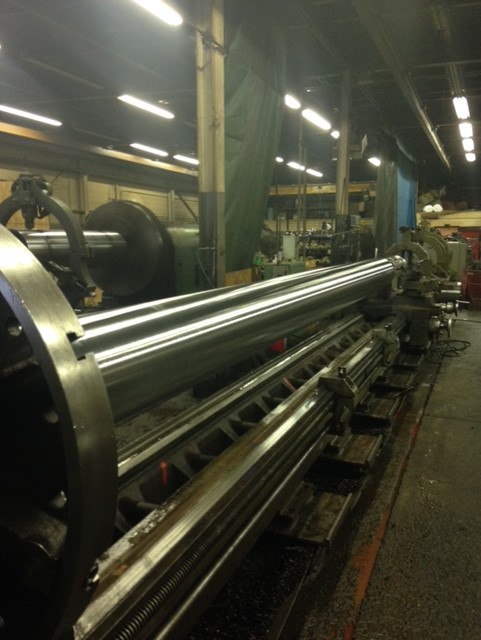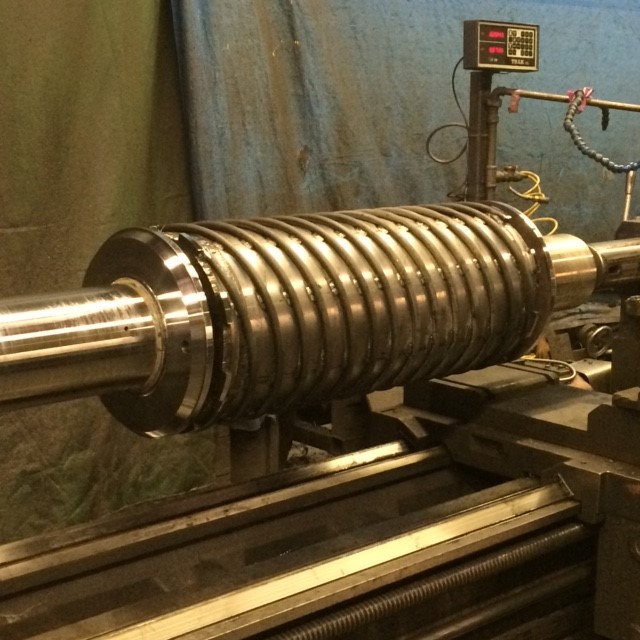Company Overview
COMPANY OVERVIEW
National Metal Finishings,
a leader in industrial role technology.
National Metal Finishings has built a worldwide reputation for manufacturing and refinishing industrial process rolls.
We manufacture a wide range of rolls including heating, cooling, nip, idler, and blank rolls – all available in a variety of finishes and surface coverings. Every hard surface roll produced is designed for maximum strength, long life, and easy repair. National Metal Finishings is capable of meeting all roll requirements from an optical mirror finish of less than 0.5 Ra to controlled matte finishes. Rolls can be reconditioned many times to OEM specifications.

Experienced Personnel
Capability & Quality
NM Finishing’s two New Jersey plants are fully equipped with modern equipment and experienced personnel for complete fabrication and finishing. All operations such as machining, grinding, chromium plating, and polishing, are handled under one roof. These state of the art facilities and experience personnel allow national to offer a unified responsibility, from the design stage to the finished product. Because of NMF’s background in production, the dependable repair of critical roles prevents downtime.
Once your role is in National’s hands their quality control ensures that it will be inspected continuously through the process by the Engineering Department to meet the most exacting tolerances.
EXPERIENCE
WORLD CLASS ROLLS OF THE HIGHEST QUALITY FOR OVER 50 YEARS.
Since 1971 National Metal Finishings has served all industry groups and the original equipment market in the United States, Europe, Asia, and South America.

WORLD CLASS ROLLS OF THE HIGHEST QUALITY FOR OVER 50 YEARS.
What are chill rolls?
Before you purchase a new roll, it is better to have a proper understanding of it, which includes basic knowledge of its design, function, and construction. Once you have such primary understanding, you can easily find the best product available for you out there in the market.
Chill roll is used as a heat transfer in the extrusion process of a flat sheet and cast film. It also works as a finishing device in coating operations. All of these processes are different, but their criteria for designing does not change, which includes roll load, heat removal rate, and face deflection. When we take functional aspects of a roll into account, they are different from process to process. For deciding roll construction, using materials, and surface finishing, the, and the product should be considered. All these factors play a crucial role in creating a perfectly designed chill roll.
The roll load in pounds per linear inch, which is the primary designing factor. A hydraulic actuating system is used for applying pressure on a web. There are a few equations that are used in the calculation of roll load..
Heat Removal Rate:
Before any downstream operations, heat roll takes away heat from the product. It is the basic function of the chill roll. There are a number of factors that should be considered to ensure the cooling capabilities of used rill during extrusion operations. The following factors should be considered:
- Type of polymer
- Maximum extruding output
- Melting temperature at the die exit
- The desired temperature of the roll
- Heat specification for the polymer
To remove a specific set of process conditions, the factors as mentioned above can be used in the calculation. Whether it is about making changes such as increasing total rate or maintaining heat removal rate, these factors should be taken into account. The heat removal rate is a crucial thermal factor, and another is the coolant flow rate.
Coolant Flow Rate:
When it comes to determining the roll’s ability to remove the needed heat and temperature differences, the coolant flow rate plays a significant role. Proper cooling is essential and for that sufficient flow is required. Therefore, the coolant flow rate is vital for the chill roll. Rolling mill manufacturers in Ahmedabad generally use a flow meter to compare the actual flow rate with calculated heat removal rate.
When the temperature variation is higher than expected, then it shows the limited flow in the coolant system or roll. Such large variations disable the product to released adequately from a roll. This might be the result of a blockage in the cooling passages of a roll. Cleaning the internal passage will solve the problem.
- Construction
- There are three main types of chill roll construction:
- Double shell spiral baffle
- Cooling can
- Single shell
Among them cooling can is the oldest design and today, it is not entirely reliable as it has low quality mechanical and thermal abilities. Once the single shell design has introduced, the mechanical and thermal abilities have improved. The double shell spiral baffle has improved coolant flow characteristics. The internal spiral baffles give support to the outer shell and improve the coolant flow. To achieve better cooling efficiency, the design also provides increased coolant velocity.
Along with the function of defining the size and cooling down the product, the role also gives the surface finish. There can be two types of surface finish, polished or rough like sandpaper. The most common roll finishes are matte, polished, engraved, and release. To have a smooth polished appearance, the polished roll can be used. To give texture surface, matte finish is used. The release finish ensures the smooth releasing products from the roll. To achieve a smooth and printable surface, paper coating processors use a glossy finish.
Summary:
We have covered all the necessary things about chill rolls, how does it make, the applications of rolls and types of chill rolls. When it comes to placing an order, you should look for a reputed company that can cater to your requirement with perfection
WORLD CLASS ROLLS OF THE HIGHEST QUALITY FOR OVER 50 YEARS.
Contact Us
